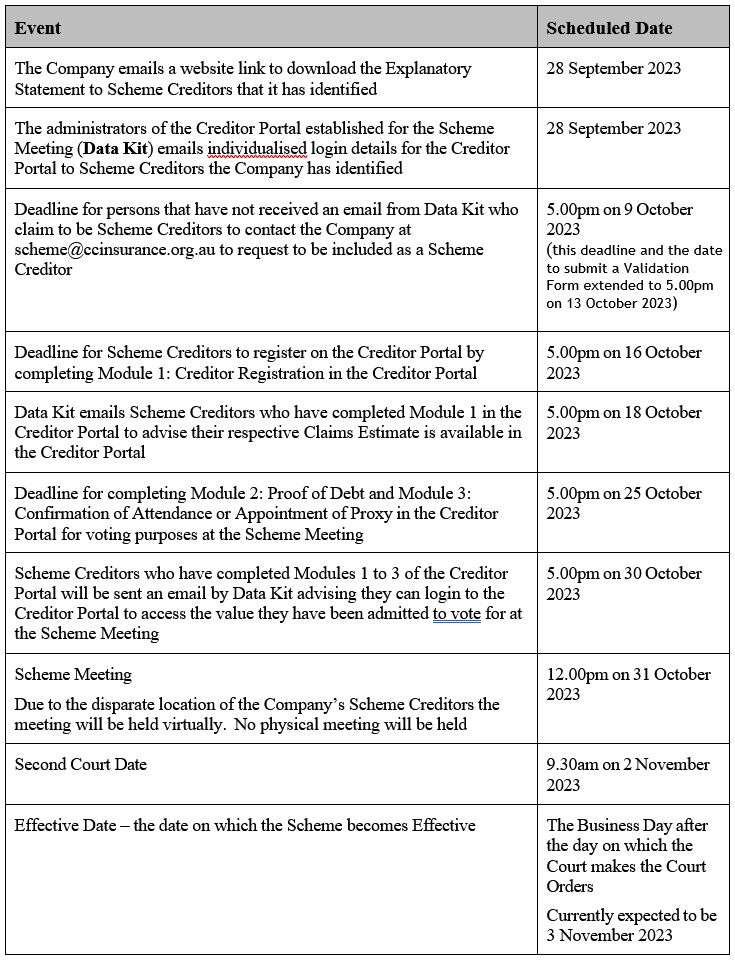The Insurance Contracts issued by the Company fall into 2 general categories – short tail policies (claims will run off within 2-3 years) and long tail policies (claim may be made for up to or beyond 20 years). Once the short tail policies have run off, the number of Insurance Contracts that remain available for Scheme Creditors to make Scheme Claims will be significantly reduced. At that point, the costs associated with the Company maintaining full claims assessment capability into the future may not be justified in light of the volume of Scheme Claims being received by the Company at that time. Such costs will reduce the assets of the Company available for distribution to Scheme Creditors.
In light of this, during the Reserving Period, Scheme Creditors may resolve to bring the Scheme to an end early. This would activate a finalisation mechanism under which all remaining claims of Scheme Creditors (including contingent or prospective claims not yet due and payable) would be valued and paid out of the remaining Scheme Assets. This means that Scheme Creditors with remaining (or prospective or potential future) claims (including IBNR claims) would receive a lump sum, and would have no further rights to make claims under their policies on an ongoing basis.
Scheme Creditors would be accountable for meeting any difference between the lump sum paid to them and the amount of any claim against them.
The finalisation mechanism is designed to align with what would occur if the Company was placed in a winding up. It would finally settle all claims and prospective claims of Scheme Creditors at a single point in time, which may reduce Scheme Costs and allow certain Scheme Creditors to receive payments which are larger and/or made earlier than if the Scheme continued to run for a longer period into the future.
The approval of the Company and the Scheme Advisers is required before the finalisation mechanism is activated.
If a Trigger Event does occur, the Company does not currently expect that the finalisation mechanism would be activated until material progress had been made on clearing current claims and the short tail claims. Due to the nature of some long tail claims, this may take up to 10 years after the Effective Date. Before activating the finalisation mechanism, any potential impact of any remaining reinsurances would need to be considered.
For more detail on the finalisation mechanism itself and what would happen if it was activated, please see section 15 below.


